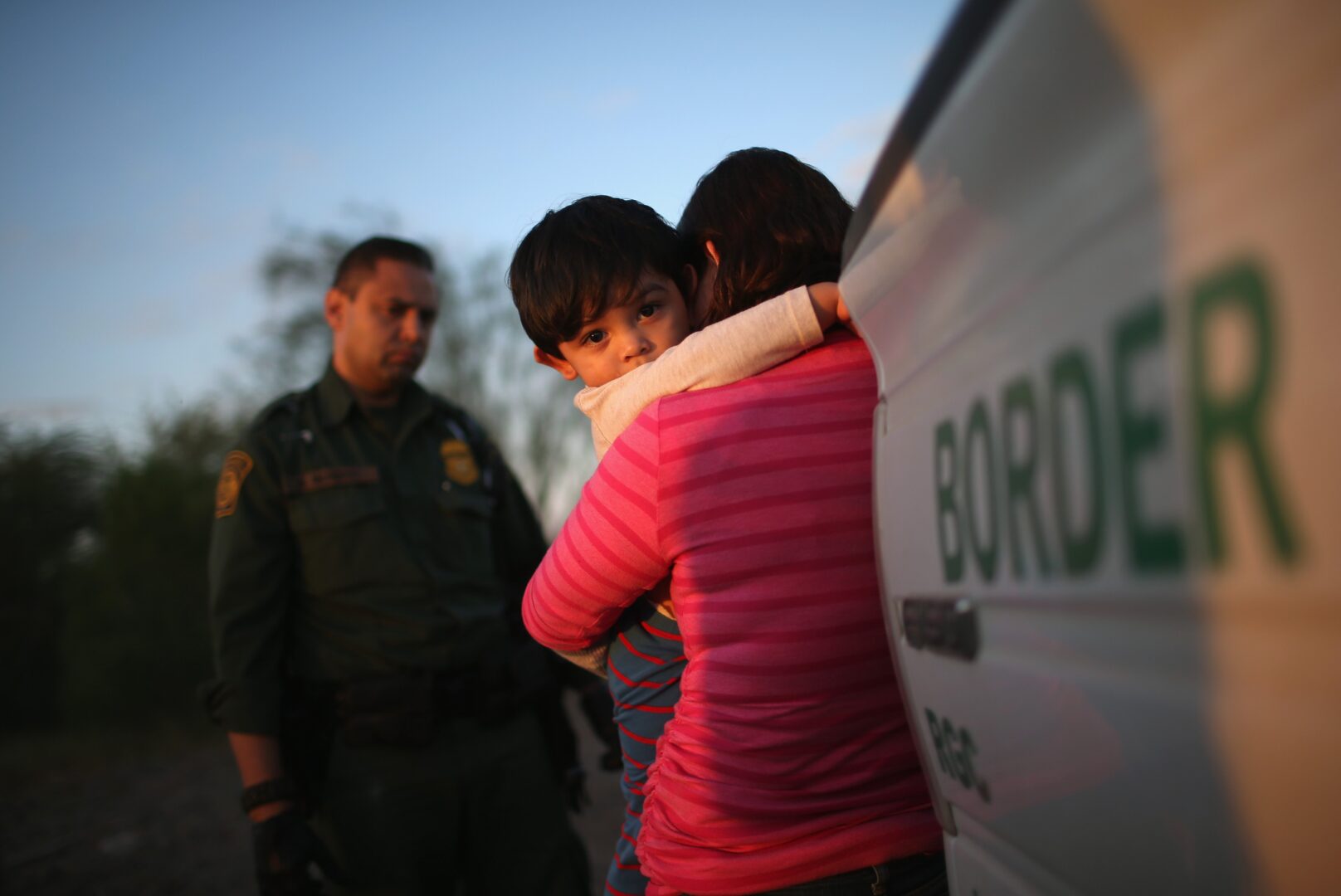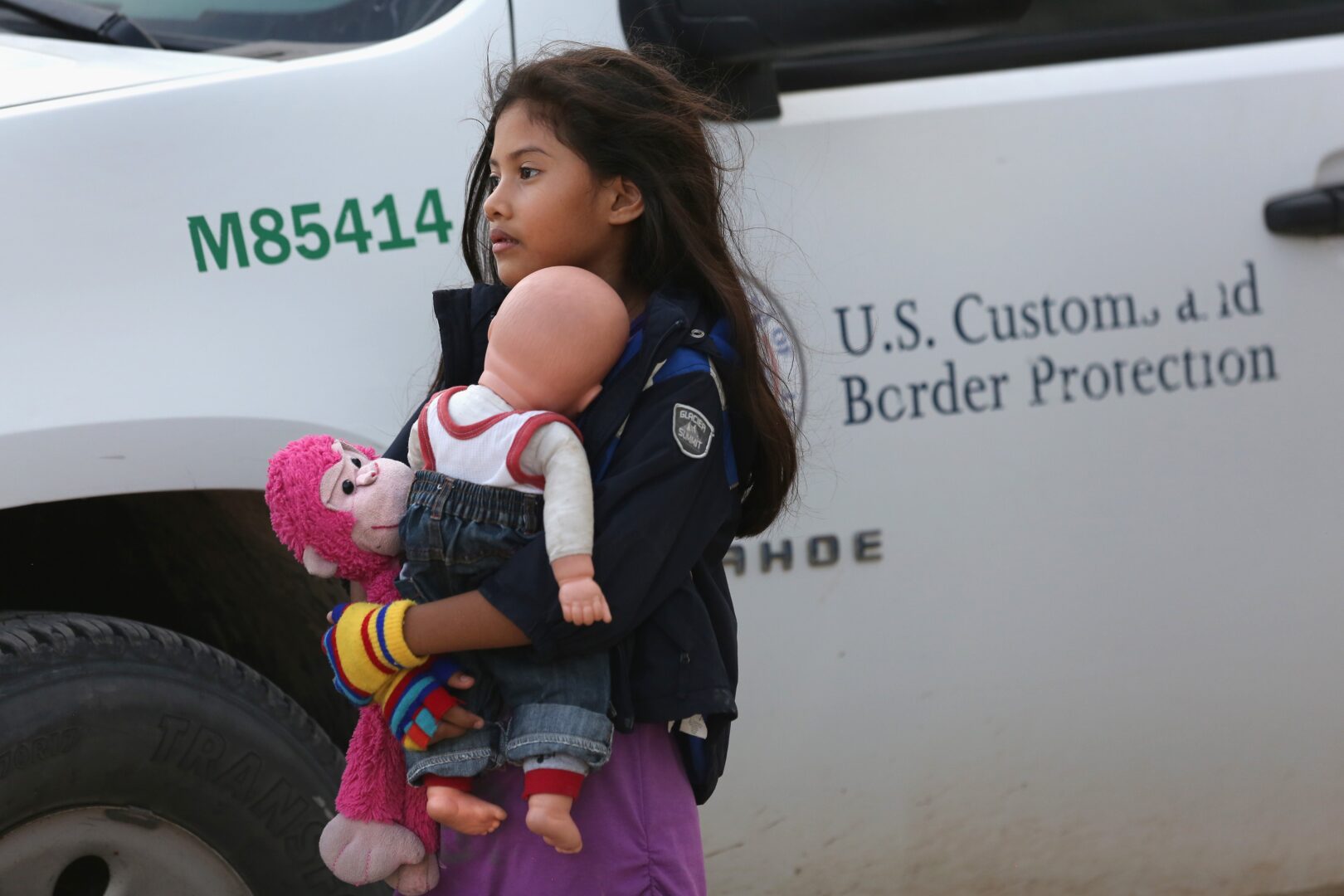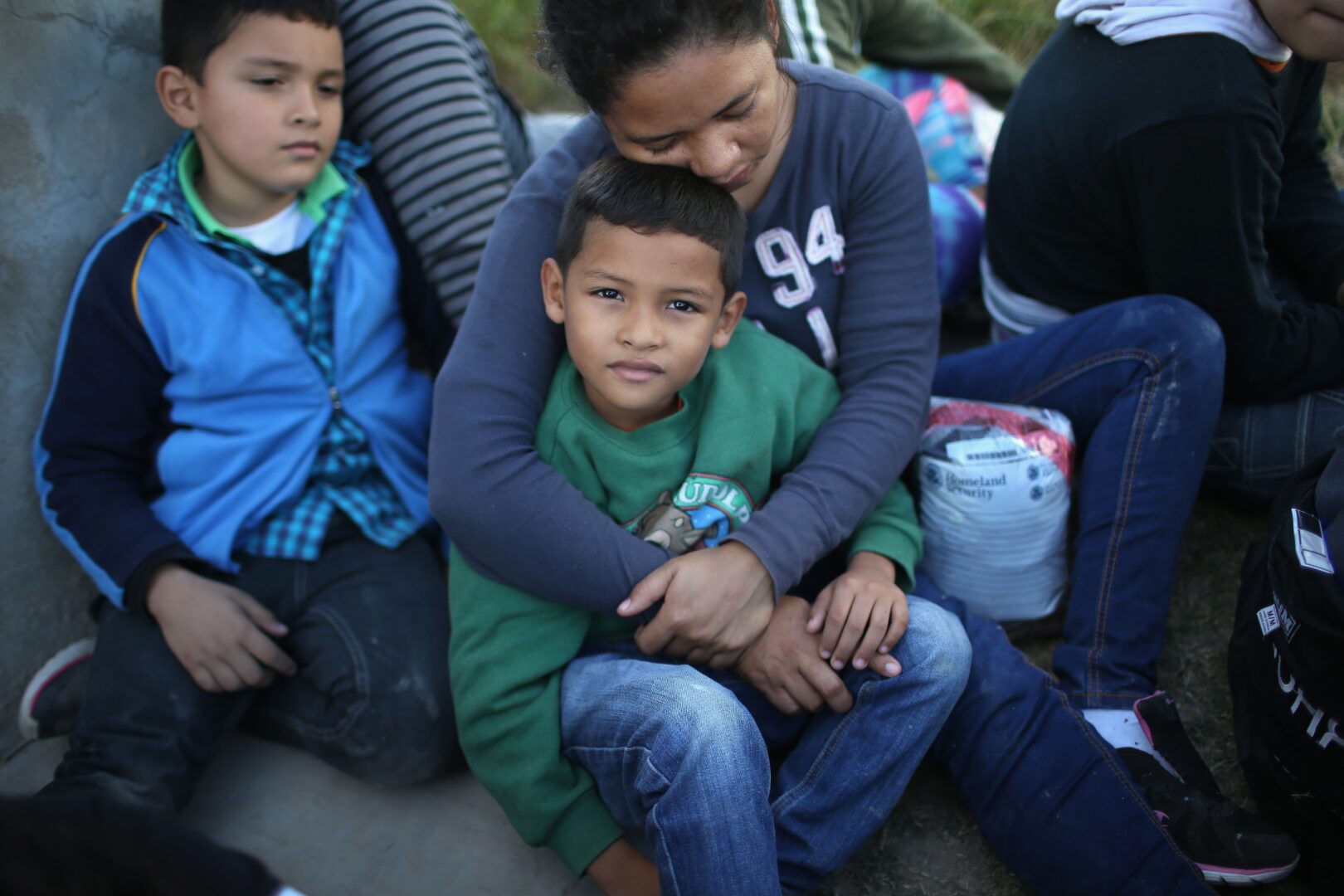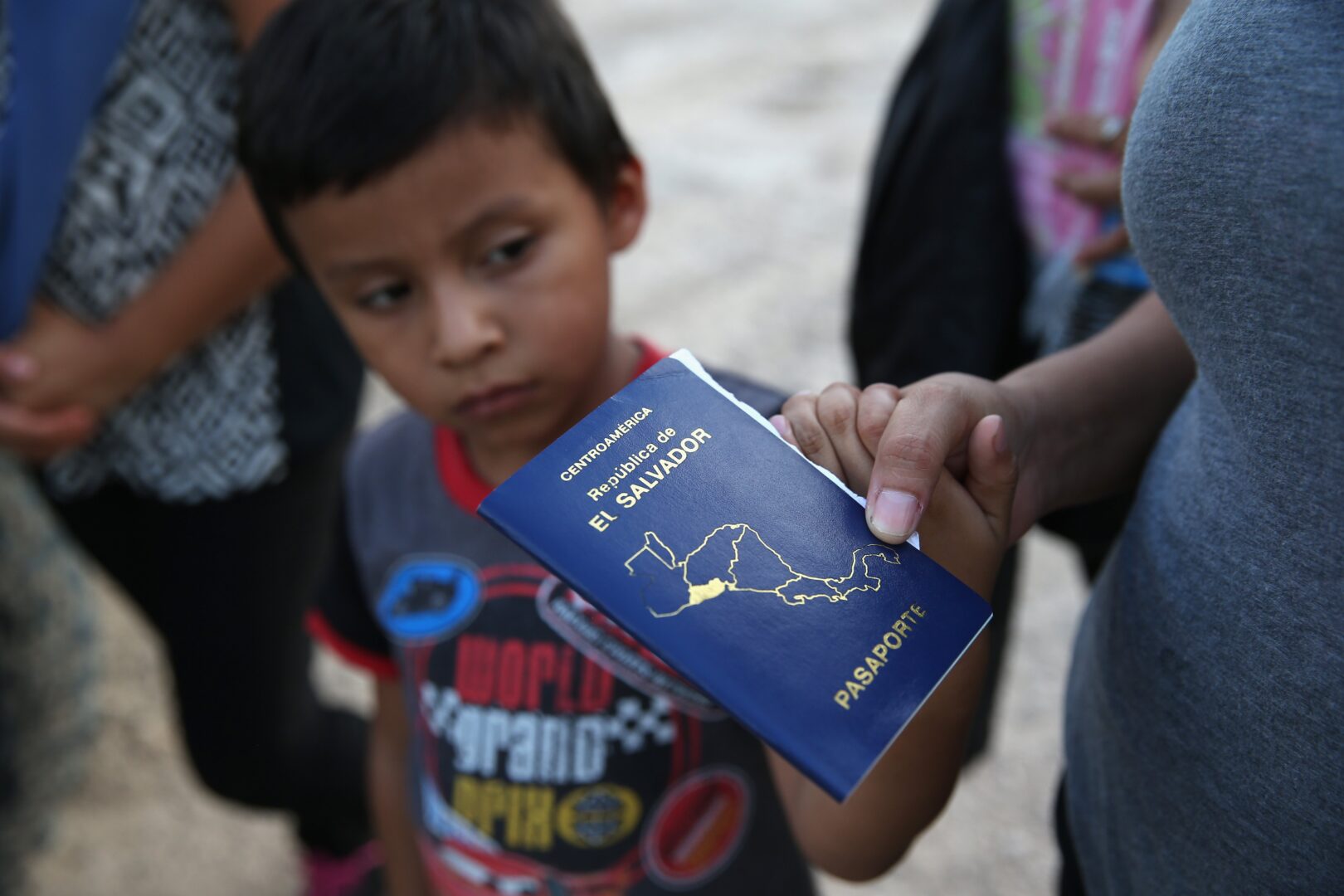WATCH LIVE: Human Rights Implications of Protecting People on the Move in the Americas
Migration from Central America to the U.S. is not a new phenomenon, however the reasons, or push factors that are causing people to migrate or flee have changed. The Northern Triangle of Central America (“NTCA”), composed of El Salvador, Guatemala, and Honduras, is considered one of the most dangerous places on earth, which has caused unprecedented levels of migration. The United Nations High Commissioner for refugees has called this a humanitarian crisis. Many Central Americans are refugees who like Syrians, are fleeing for their lives.

A one-year-old from El Salvador clings to his mother ( John Moore/Getty Images)
While the United States has seen a record in asylum applications in recent years, Central American countries are dealing with larger migratory flows from the NTCA within their borders. According a 2014 UNHCR report, Mexico, Belize, Costa Rica, Nicaragua and Panama have had a 432% increase in asylum applications.
Salvadorian immigrant Stefany Marjorie, 8, holds her doll Rodrigo ( John Moore/Getty Images)
Enforcing borders over humanitarian protection
In Mexico there is a concerning trend, the Mexican government’s focus is one of border enforcement rather than humanitarian protection.
- Detention of immigrants went up 71% in 2014, then in 2015 it deported 150,000 Central Americans from the Northern Triangle.
- The Mexican government also reported that only 24.7% of asylum applications were approved. The U.S. is much more restrictive, for in 2014 it asylum grant rate was 3.7%

Honduran mother holds her son, 7 ( John Moore/Getty Images)
Horrific Levels of Violence Against Women
Women and children are the most vulnerable in this crisis as they can easily become victims of rape, kidnapping, torture, or murder. Within the NTCA, gender-based violence is used as a means of intimidation or coercion.
- According to a report on the Global Burden of Armed Violence, in the period between 2007 to 2012, El Salvador, Honduras and Guatemala had the highest average annual female homicide rates in the world.
An increase in crime has spilled over into neighboring countries as well. According to the UNHCR, the rate of women from these countries applying for asylum in the US has increased five times over.

Source: Global Burden of Armed Violence 2015: Every Body Counts

John Moore/Getty Images
Protecting Unaccompanied Children Fleeing For Their Lives
What is most shocking is the number of unaccompanied children who are seeking refuge outside their country. According to the Federation for American Scientists in 2014 alone US Authorities documented 68,500 unaccompanied children from the Northern Triangle at the US/Mexico border. When interviewed children predominantly cited the following reasons for fleeing the region:
- Fleeing violence in their community and/or home
- actively avoiding recruitment into gangs
- avoiding exploitation in the form of prostitution or human trafficking
While the rates of unaccompanied children has decreased since its peak in 2014, authorities and policy makers continue to struggle with the number of children already at US borders and within the system.
What sets this crisis apart from others around the world?
While the violence occurring within the Northern Triangle is indisputable, the legal classification of migrants from the region sits within an area of ambiguity within international law as the violence in NTCA is not classified as a state/interstate conflict. All the while, research show that migrants are identifying key indicators that suggest they are in need of international protection. For example, 82% of women indicated that if returned to their home country they would likely face torture or persecution (UNHCR).
As a result of this, the US government has announced an expansion of the current refugee resettlement program for migrants fleeing from NTCA. This expansion is a definitive step in the right direction, but it is a far cry from the measures that need to be taken internationally towards resettling those displaced.
For more information on lack of human rights protections in the Northern Triangle, associated migratory flows, and the current state of immigration systems in US and Central America visit the UNHCR website and their two most recent reports “Women on the Run” and “Children on the Run”.
